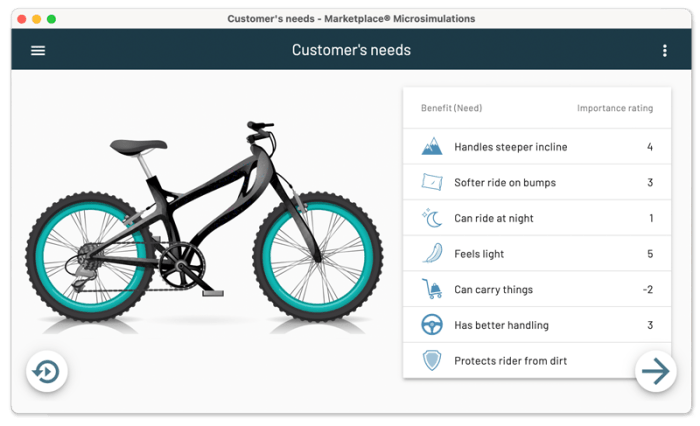Marketplace microsimulations bottom line answers: A deep dive into the captivating realm of simulations, where intricate market dynamics are laid bare, empowering decision-makers with unparalleled insights. This comprehensive guide unravels the essence of marketplace microsimulations, their applications, and the future directions shaping this transformative field.
Unveiling the intricacies of marketplace microsimulations, this discourse delves into their conceptual foundations, exploring the benefits and limitations that guide their effective utilization. It provides invaluable guidance on designing robust microsimulations, encompassing considerations for complexity levels, data inputs and outputs, and best practices for validation and calibration.
Marketplace Microsimulations: An Overview

Marketplace microsimulations are computational models that simulate the behavior of agents (e.g., consumers, firms) in a marketplace. They allow researchers and practitioners to analyze market dynamics, evaluate policy interventions, and make informed decisions.
The benefits of using marketplace microsimulations include their ability to:
- Capture complex interactions and feedback loops within markets
- Simulate counterfactual scenarios to assess the impact of policy changes
- Generate synthetic data for use in market research and forecasting
However, marketplace microsimulations also have limitations:
- They can be computationally intensive and time-consuming to develop
- They require high-quality data inputs, which may not always be available
- They may not be able to accurately capture all aspects of real-world market behavior
Key Considerations for Designing Marketplace Microsimulations

When designing marketplace microsimulations, several key considerations must be taken into account:
Level of Complexity
The level of complexity of the microsimulation should be carefully chosen based on the research question being addressed. Simpler models may be sufficient for some purposes, while more complex models may be necessary for others.
Data Inputs and Outputs
The data inputs and outputs of the microsimulation must be carefully defined. The data inputs should be of sufficient quality and granularity to produce meaningful results. The data outputs should be presented in a way that is easy to understand and interpret.
Validation and Calibration
Marketplace microsimulations should be validated and calibrated to ensure that they are producing accurate results. Validation involves comparing the results of the microsimulation to real-world data. Calibration involves adjusting the parameters of the microsimulation to improve its accuracy.
Applications of Marketplace Microsimulations

Marketplace microsimulations have a wide range of applications in market research and decision-making.
Evaluating Market Dynamics
Microsimulations can be used to evaluate market dynamics, such as competition, pricing, and consumer behavior. This information can be used to develop strategies for entering new markets, expanding market share, and optimizing pricing.
Supporting Decision-Making
Microsimulations can be used to support decision-making by providing insights into the potential impact of different policy interventions or business strategies. This information can be used to make more informed decisions about product development, marketing campaigns, and pricing.
Examples of Successful Applications, Marketplace microsimulations bottom line answers
Marketplace microsimulations have been successfully applied in a variety of industries, including healthcare, retail, and transportation. For example, microsimulations have been used to:
- Evaluate the impact of new healthcare policies on patient outcomes and costs
- Optimize pricing strategies for new products in the retail sector
- Plan for the impact of new transportation infrastructure on traffic patterns and congestion
Challenges and Future Directions in Marketplace Microsimulations

Despite their many benefits, marketplace microsimulations face a number of challenges.
Challenges
- Developing and using marketplace microsimulations can be computationally intensive and time-consuming.
- High-quality data inputs are often required, which may not always be available.
- Marketplace microsimulations may not be able to accurately capture all aspects of real-world market behavior.
Future Directions
Despite these challenges, marketplace microsimulations are a promising tool for market research and decision-making. Emerging trends and future directions in marketplace microsimulation research include:
- The development of more sophisticated and computationally efficient microsimulation models
- The use of artificial intelligence and machine learning to improve the accuracy and predictive power of microsimulations
- The application of microsimulations to new and emerging markets, such as the digital economy
Key Questions Answered: Marketplace Microsimulations Bottom Line Answers
What are the key benefits of using marketplace microsimulations?
Marketplace microsimulations offer a range of benefits, including the ability to evaluate market dynamics, support decision-making, and test different strategies in a risk-free environment.
How do I determine the appropriate level of complexity for my microsimulation?
The appropriate level of complexity for a microsimulation depends on the specific objectives of the simulation. It is important to consider the trade-off between accuracy and computational efficiency.
What are the common challenges associated with developing and using marketplace microsimulations?
Some common challenges include data availability, computational complexity, and the need for specialized expertise. However, these challenges can be overcome with careful planning and execution.
